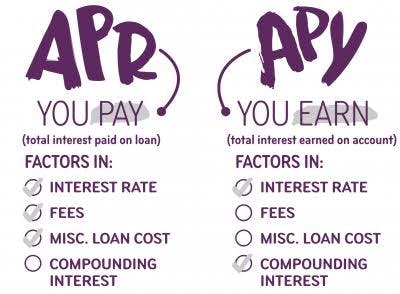Introduction
Entering the DeFi space as a degen, trying to find out how things work, you at one time might have needed clarification about the difference between Annual Percentage Yield (APY) and Annual Percentage Return (APR).
Are you the only one that is facing such an experience? Many also encountered the same in their learning curve.
This article will help you entirely understand APY and APR: how they work and what you should know about them. A complete understanding of APY and APY can position you for opportunities more than an ordinary person who doesn't know.
APY and APR have existed for so long and will continue to be relevant both in the crypto and traditional financial markets.
Relax! Let's dive in!
What is Annual Percentage Return (APR)?
Annual Percentage Return (APR): It is the annual/yearly rate of interest that borrowers pay on loans taken, and it is also the interest earned by the investor as the return on his investment.
Formula for APR A = [P × (1 + R×T)]
where
A — total final amount
P — principal, i.e., the initial investment or loan amount
R — interest rate used
T — time in years
For example, if you put $1,000 into a bank savings account with a 10% APR, you will get $100 in interest after one year. Your interest is calculated using the formula above.
After one year, you will have a total of $1,100. After two years, your capital will amount to $1,200. After five years, you will have $1,500, and so on.
What is Annual Percentage Yield (APY)?
APY means Annual Percentage Yield (APY), which is related to APR but has a compound effect. The compound is what occurs when you earn interest on the previous interest.
The interest can be compounded at any set period — either continuously, daily, weekly, monthly or annually.
Formula for APY
A = [P (1 + R/N)N]
where
A — total final amount
P — principal, i.e., the initial investment or loan amount
R — interest rate used
N — number of compounding periods
Let's dig more into Compounding Interest and Interest Rates.
Let’s imagine you invest 1.0 Matic for one year at the APY rate of 24 percent, and your investment has two recalculation periods: 6 months and 12 months. In this design, the figures in the APY formula are:
[1.0 Matic × (1 + 0.24/2)2] = 1.2544 Matic
Exploring 0% APR
0% APR allows you to borrow at zero percent interest rates. The popular concept from the credit card world has reached crypto too. Users can borrow against their crypto without paying interest, so long as their collateral has enough value. Protocols limit their risk by requiring more collateral than the borrowed amount.
What is the difference between APY and APR?
 Though APY and APR sound similar, there are crystal clear differences between them.
Though APY and APR sound similar, there are crystal clear differences between them.
APR doesn't have a compound effect on the loan borrowed or the funds in the savings, while APY has compounding interest.
APR commonly shows interest in personal debts or loans.
APR shows yearly rates because it is calculated yearly. While APY offers yearly rates with compounding effects because it is calculated periodically, whether weekly, monthly or quarterly. APY may go down while APR is constant.
What Is Better — APR or APY?
While aping to different DeFi projects, most times, degens would like to know which one is better.
However, no one can particularly say one is better than the other, but the only thing that can be done is to view it from different angles, either from a borrower's or a lender's view.
1. The Borrower's Perspective
APR is preferable for a borrower because there is no compounding effect, and this helps the borrower to be able to pay the loan without more stress.
2. The Lender's Perspective
Every investor aims to maximize profit, and an investor usually prefers APY. It enables them to earn a compounding interest on their funds (saving).
APY gives investors more returns on their investment than APR because of its compounding returns.
Bottomline
After reading through this article, I know you have understood the meaning of APY and APR, the differences, and how they work.
Comprehensive knowledge of APY and APR will guide traders/investors in making informed decisions while entering any DeFi projects.
Though APY is more complex than APR, always remember that any project that boasts about a very high APY may not last, or they might even rug-pull investors. Learn to be suspicious when you see a high APY.


